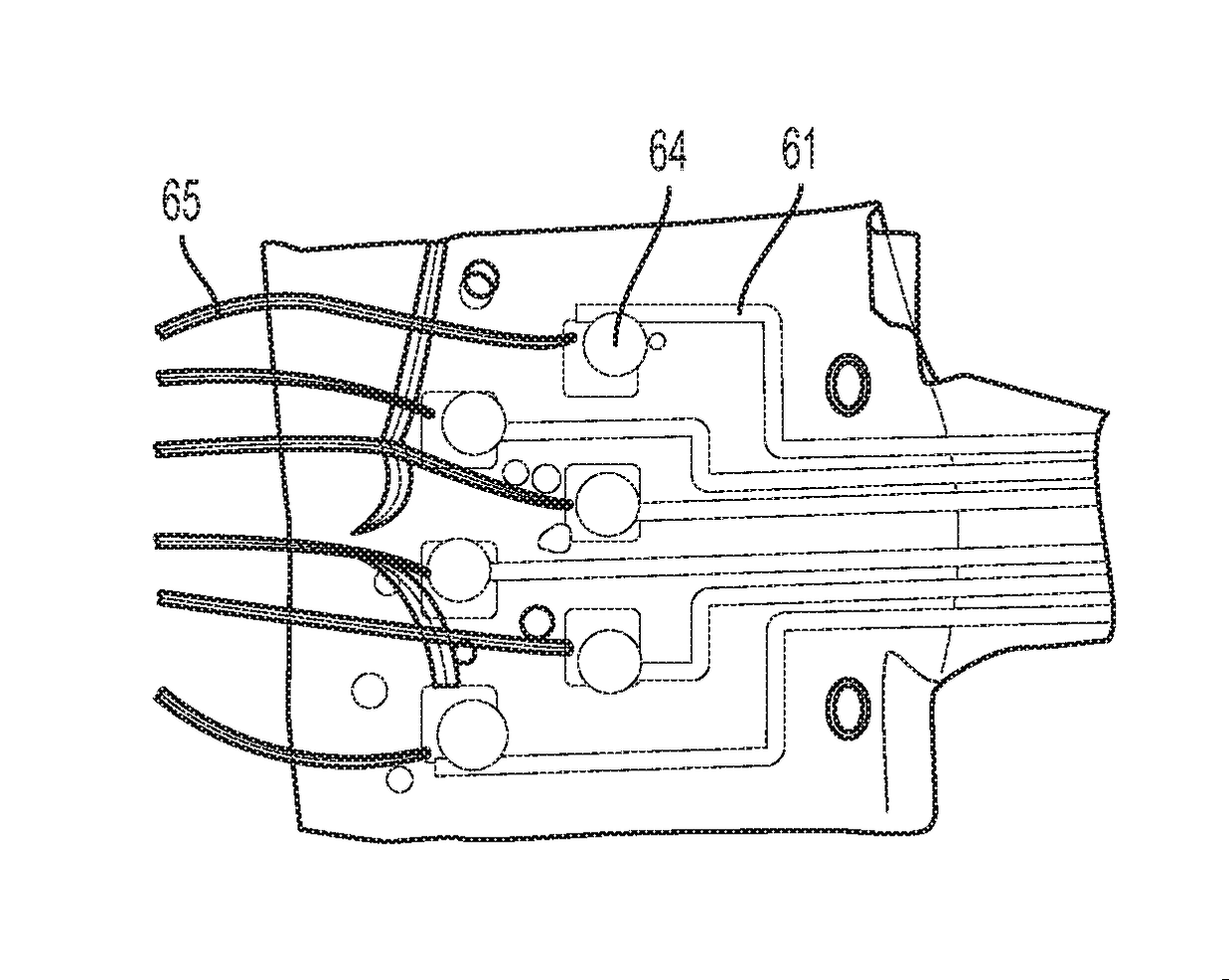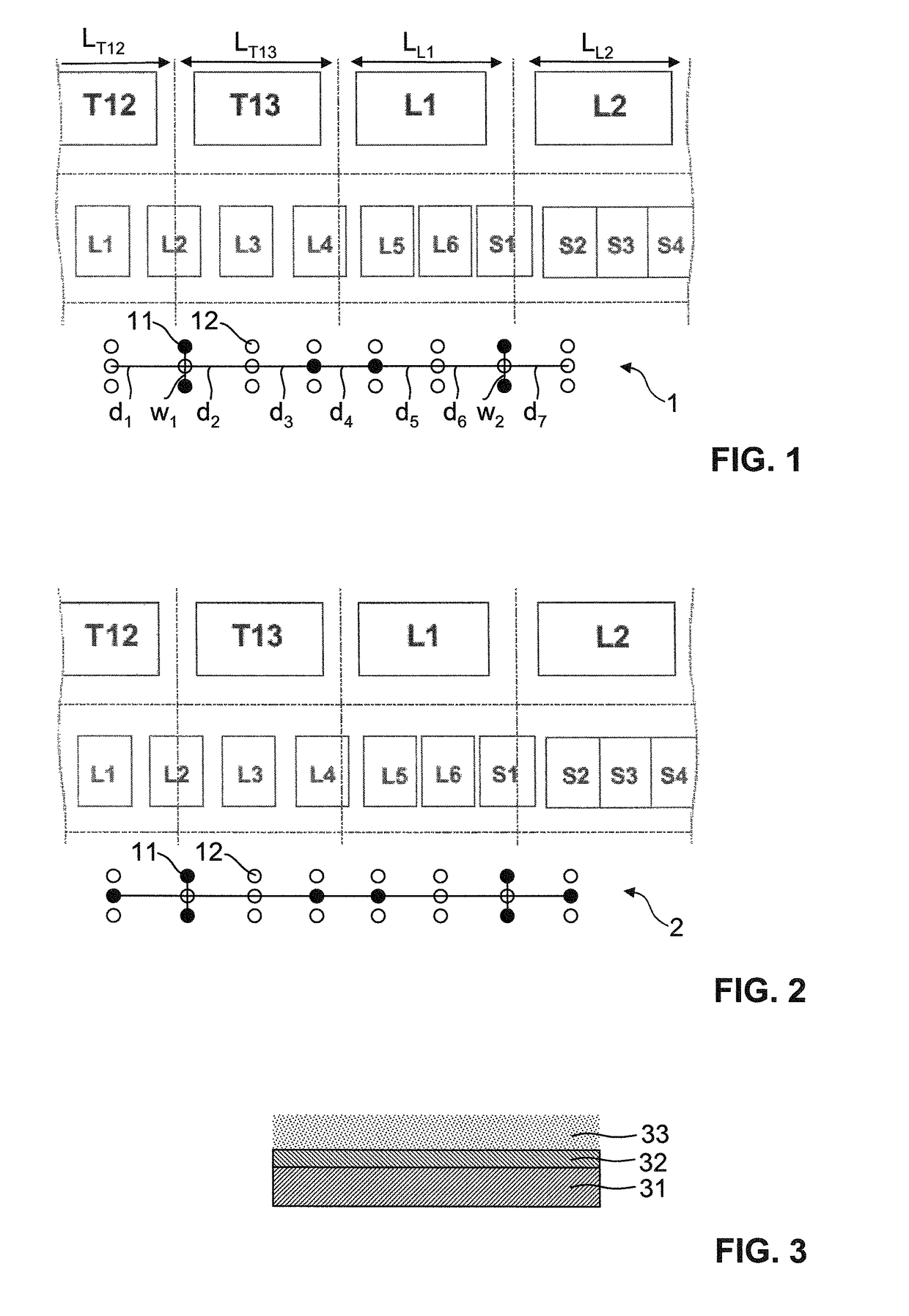PDMS-based stretchable multi-electrode and chemotrode array for epidural and subdural neuronal recording, electrical stimulation and drug delivery
a multi-electrode, chemotrode technology, applied in the field of pdms-based stretchable multi-electrode and chemotrode array for epidural and subdural neuronal recording, electrical stimulation and drug delivery, can solve the problems of limited stretchability, tissue damage, implant damage or loose contact between electrodes and targeted tissues, etc., to facilitate locomotion, improve specificity, and reduce pain
- Summary
- Abstract
- Description
- Claims
- Application Information
AI Technical Summary
Benefits of technology
Problems solved by technology
Method used
Image
Examples
example
SMEA Produced by Sixth Process
[0094]FIGS. 11 and 12 show an array of eight platinum electrodes 62 in the arrangement of FIG. 2, produced using the sixth process as shown in FIG. 9. The width of each conductive track 61 is 150 μm. The minimum distance between two next-neighbor tracks is 150 μm. The diameter of each electrode 62 is 350 μm. Holes 63 of 350 μm diameter are visible. The thickness of the array is within the range of 100-200 μm. It does not exceed 300 μm. The width of the array is within the range of 2.8-3.0 mm.
[0095]Omnetics™ circular connectors were used as headplugs for the rats. Medical fine wires 65 with stainless steel core and PTFA insulation were used to connect the array to the headplug at the contact pads 64, as shown in FIG. 13. To this end, the insulation was removed from the tip of each fine wire 65. Each tip was then placed on top of a contact pad 63. Ag-epoxy was used to electrically connect wires and pads. The Ag-epoxy was cured for 1 hour at 130° C. in an ...
PUM
| Property | Measurement | Unit |
|---|---|---|
| total thickness | aaaaa | aaaaa |
| thickness | aaaaa | aaaaa |
| thickness | aaaaa | aaaaa |
Abstract
Description
Claims
Application Information
 Login to View More
Login to View More - R&D
- Intellectual Property
- Life Sciences
- Materials
- Tech Scout
- Unparalleled Data Quality
- Higher Quality Content
- 60% Fewer Hallucinations
Browse by: Latest US Patents, China's latest patents, Technical Efficacy Thesaurus, Application Domain, Technology Topic, Popular Technical Reports.
© 2025 PatSnap. All rights reserved.Legal|Privacy policy|Modern Slavery Act Transparency Statement|Sitemap|About US| Contact US: help@patsnap.com



